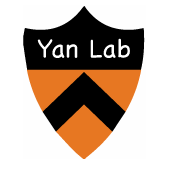Molecular mechanism of AHSP-mediated stabilization of alpha-hemoglobin
Type
Hemoglobin A (HbA), the oxygen delivery system in humans, comprises two alpha and two beta subunits. Free alpha-hemoglobin (alphaHb) is unstable, and its precipitation contributes to the pathophysiology of beta thalassemia. In erythrocytes, the alpha-hemoglobin stabilizing protein (AHSP) binds alphaHb and inhibits its precipitation. The crystal structure of AHSP bound to Fe(II)-alphaHb reveals that AHSP specifically recognizes the G and H helices of alphaHb through a hydrophobic interface that largely recapitulates the alpha1-beta1 interface of hemoglobin. The AHSP-alphaHb interactions are extensive but suboptimal, explaining why beta-hemoglobin can competitively displace AHSP to form HbA. Remarkably, the Fe(II)-heme group in AHSP bound alphaHb is coordinated by the distal but not the proximal histidine. Importantly, binding to AHSP facilitates the conversion of oxy-alphaHb to a deoxygenated, oxidized [Fe(III)], nonreactive form in which all six coordinate positions are occupied. These observations reveal the molecular mechanisms by which AHSP stabilizes free alphaHb.

